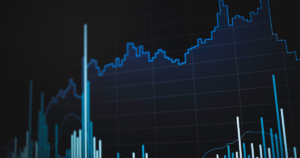When it comes to trading, understanding the different market sentiments is crucial for success. One such sentiment is the bearish market, which refers to a downward trend in prices. In this blog post, we will delve into the meaning of bearish trading, how to spot a bear, and the strategies employed by bearish traders. Whether you’re a seasoned trader or just starting out, this comprehensive guide will provide you with valuable insights into bearish trading.
What Does it Mean to be Bearish in Trading?
Being bearish in trading means having a negative outlook on the price movement of an asset, sector, industry group, or the overall market. Bearish traders believe that prices will decrease, and they aim to profit from this downward movement. They stand opposite to bullish traders, who anticipate price increases. Bearish traders often have a higher proportion of short positions in their portfolios, reflecting their pessimistic view on price action.
Spotting a Bear in Trading
Identifying a bear in the trading world is relatively straightforward. Bears can be recognized by their negative outlook on price action and their inclination towards short positions. While bears are less common in stock market trading compared to the Forex market, where prices are more volatile, they still play a significant role in market dynamics. In the Forex market, sentiment and positions can change rapidly, offering a balance between bears and bulls.
Bearish Trading Strategies
Bearish traders employ various strategies to capitalize on downward price movements. One common strategy is short selling, where traders borrow an asset and sell it, with the intention of buying it back at a lower price. Another approach is buying inverse exchange-traded funds (ETFs), which move in the opposite direction of the underlying asset or index. Additionally, options trading and put options can provide opportunities for bearish traders to profit from declining prices.
The Risks and Challenges of Bearish Trading
While bearish trading can be profitable, it is not without its risks and challenges. Bears face the possibility of unlimited downside risk, as there is theoretically no limit to how far an asset can rally. Prudent risk management is essential to mitigate potential losses. Furthermore, bear traps, where a temporary upward price movement occurs within a bearish trend, can lead to substantial losses if traders are caught on the wrong side of the market.
Conclusion
Bearish trading is an important aspect of the financial markets, offering opportunities for traders to profit from downward price movements. By understanding the characteristics of bearish traders and the strategies they employ, you can enhance your trading skills and make more informed decisions. However, it’s crucial to remember that markets are dynamic, and both bullish and bearish sentiments can coexist. Developing a well-rounded trading approach that considers both perspectives can help you navigate the ever-changing market landscape.
Disclaimer: Trading involves risk, and it’s important to conduct thorough research and seek professional advice before making any investment decisions.








